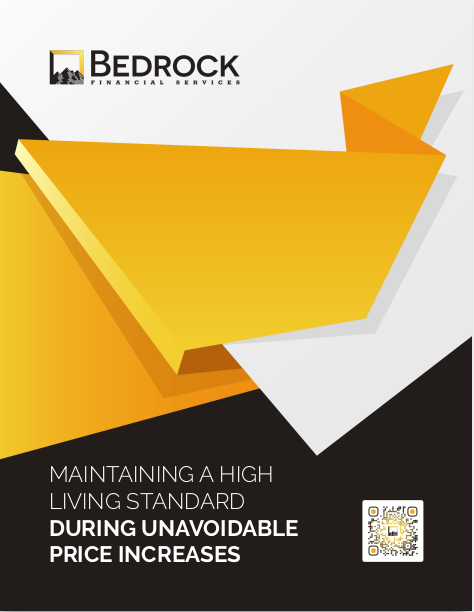Key Takeaways
-
Retirement income planning is no longer about fixed projections—clients expect adaptive strategies that evolve with life, markets, and healthcare realities.
-
As a financial professional, you need to guide clients through dynamic strategies that respond to volatility, longevity, inflation, and behavioral shifts over time.
Retirement Isn’t Static Anymore—Your Planning Shouldn’t Be Either
In 2025, retirement looks radically different from what it did even a decade ago. With longer lifespans, market unpredictability, rising healthcare costs, and shifting tax landscapes, clients are no longer satisfied with fixed-income projections or rigid withdrawal plans. They want strategies that can flex, pivot, and protect them throughout decades of retirement.
As a financial professional, your approach must match that expectation. A static model doesn’t reflect the lives your clients will actually live. Instead, retirement plans must now operate more like living documents—responsive, resilient, and regularly reviewed.
Start with a Foundation That Allows for Flexibility
While your clients need confidence and clarity, that doesn’t mean locking them into inflexible decisions. The starting point of any adaptable retirement strategy is a solid, diversified foundation. That means:
-
Establishing baseline guaranteed income sources (e.g., pensions, Social Security, annuitized portions)
-
Creating a flexible withdrawal portfolio that adjusts based on market performance
-
Using time segmentation or bucketing to align short-, mid-, and long-term needs
From here, you have the agility to tweak based on external changes or personal shifts.
Rebalance Expectations: Shift from Projections to Scenarios
Clients often enter retirement planning conversations expecting precise forecasts. But exactness is misleading. Instead, show them the value of scenario-based planning:
-
Offer a range of possible outcomes instead of a single number
-
Run “what if” models that stress-test against inflation spikes, market dips, or unexpected expenses
-
Use Monte Carlo simulations not as a probability gimmick, but as a discussion tool to prepare for variability
When clients understand that their strategy accounts for unpredictability, they engage more confidently.
Longevity Is the Real Risk Multiplier
In 2025, the average retiree can expect to live well into their 80s—and for many, even longer. That means every other risk (market, inflation, healthcare, cognitive decline) compounds over time. Build strategies with these longevity-conscious principles:
-
Plan for a 30-year or longer retirement horizon
-
Delay certain withdrawals or Social Security benefits when it makes sense
-
Implement guardrails that adjust income streams if spending outpaces projections
Even clients who say they don’t expect to live long are better served by planning as if they will. Flexibility becomes even more critical the longer the time horizon stretches.
Healthcare Is an Inflation Category of Its Own
General inflation matters, but healthcare inflation is its own beast. Costs for services, long-term care, and prescriptions are rising faster than average inflation, and Medicare rules shift frequently. Retirement strategies must reflect that reality:
-
Budget for healthcare to grow faster than other expense categories
-
Plan for transitions like Medicare enrollment at 65 and related supplemental needs
-
Include liquidity options for long-term care or catastrophic health events
The healthcare component of retirement is not just a side expense—it’s central to your client’s long-term financial security.
Withdrawal Strategies Need More Than a Rule of Thumb
In a world of volatility and personal unpredictability, the traditional 4% rule is far too blunt. Adaptive withdrawal strategies are now essential, such as:
-
Dynamic withdrawals that adjust annually based on portfolio performance
-
Guardrail approaches that set upper and lower income thresholds with spending flexibility
-
Floor-and-upside models that separate essential spending from discretionary layers
These approaches help preserve portfolio longevity and reduce client anxiety when markets underperform.
Taxes Can’t Be Ignored in Adaptive Planning
Tax diversification is a cornerstone of flexible retirement income. In 2025, federal tax brackets are inflation-adjusted, but proposed legislative shifts could still upend future liabilities. Your planning should:
-
Incorporate tax-efficient withdrawal sequencing (e.g., Roth, traditional, brokerage)
-
Consider Roth conversions during low-income years early in retirement
-
Stay alert to legislative changes impacting required minimum distributions (RMDs), Social Security taxation, and Medicare premium thresholds
When you help clients stay nimble with tax strategy, you build long-term trust and reduce portfolio drag.
Behavioral Shifts Happen—Your Strategy Should Account for Them
Client behavior evolves. Spending changes. Health declines. Family dynamics shift. A good retirement strategy accounts for those natural transitions:
-
Plan for higher spending in early retirement and reduced spending later
-
Build in margin for gifting, family support, or relocation
-
Revisit plans annually or during key life events
An adaptive strategy isn’t just about market forces—it’s about matching the actual arc of human aging and personal evolution.
Communication Is a Feature of the Strategy, Not an Add-On
The best strategy on paper means nothing if clients don’t understand it or feel connected to it. That’s why your communication cadence is part of the plan itself:
-
Offer structured annual reviews with strategy recalibration
-
Send quarterly updates with contextual commentary
-
Use visual tools and real-time dashboards to replace jargon with clarity
Your clients don’t want just data—they want insight. And they want you to interpret it for them consistently.
It Pays to Reassess Risk at Every Stage
Too often, risk tolerance is assessed once and never revisited. But adaptive retirement strategy demands periodic reassessment:
-
Revisit risk profiles every 3–5 years or during major transitions
-
Adjust asset allocations to reflect changing needs, not just market performance
-
Educate clients about sequence-of-returns risk and how it evolves over time
You position yourself as a long-term strategist, not just a product provider, when you normalize the idea that plans should evolve.
The Power of Simplicity in a Complex World
Adaptability doesn’t mean over-complication. In fact, the best adaptive strategies often rely on simplifying frameworks:
-
Clear spending tiers: needs, wants, wishes
-
Buckets with defined timeframes and purposes
-
Guardrails to automate decision-making in volatile times
When clients can grasp their plan quickly and intuitively, they feel more in control—even when life veers off course.
What Clients Want in 2025: Confidence, Control, and Communication
Your clients aren’t asking for magic. They’re asking for:
-
A plan that adapts when markets shift
-
A guide who communicates openly
-
A sense of control, even in uncertainty
They don’t want promises—they want preparation. Your job is to build a framework that offers structure with breathing room.
Help Clients Stay on Track, Even When Life Doesn’t Go as Planned
Clients will inevitably encounter detours: job loss, caregiving responsibilities, health crises, early inheritance, housing transitions. A rigid income stream doesn’t serve them when circumstances change.
Position yourself as their long-term partner who:
-
Reviews and readjusts the plan proactively
-
Educates without overwhelming
-
Leads with empathy as well as expertise
That’s what keeps clients loyal. That’s what earns referrals.
Adaptive Planning Is the Standard in 2025—Not the Exception
What used to be considered advanced planning is now the minimum expectation. Retirement today isn’t a one-time event but a decades-long evolution.
As a financial professional, your value increases when you:
-
Offer a framework that flexes with life events
-
Incorporate market, tax, healthcare, and behavioral variables
-
Use proactive communication as a retention tool
At Bedrock Financial Services, we help financial professionals like you build practices that meet the modern retiree’s needs. Our tools, training, automation, and high-quality support systems empower you to offer adaptive retirement strategies without doing everything manually.
If you’re ready to work smarter and scale your client relationships without sacrificing personal connection, sign up with Bedrock today.







